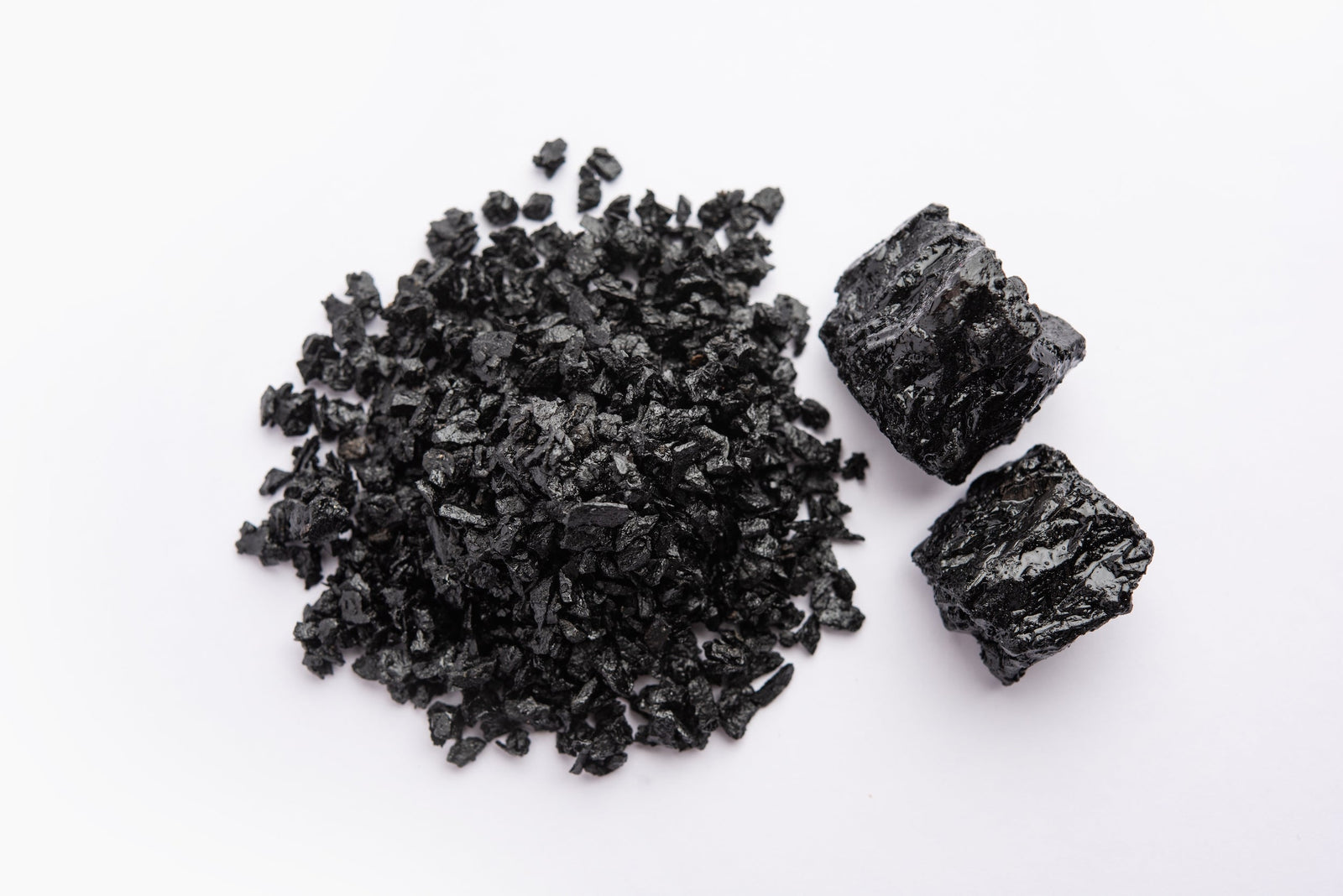With over 60,000 Google searches per month, Shilajit is gaining attention as a mysterious Ayurvedic compound that promises everything from better energy to higher testosterone. But what is it really—and does the science actually back the claims?
Shilajit is an ancient resin-like substance, oozing from rocks high in the Himalayas, Tibet, and Altai Mountains, rich in fulvic acid and trace minerals. It’s long been used in traditional medicine to improve vitality, cognition, and recovery, but modern research is limited—and often misunderstood.
In this comprehensive guide, you’ll learn:
-
What Shilajit is
-
How it works
-
What the research really says about its benefits
-
Whether it’s safe
-
How it compares to other popular adaptogens like Tongkat Ali and Ashwagandha
What Is Shilajit?
Shilajit is a sticky, tar-like exudate formed from decomposed plant material and minerals. It's naturally found in rock crevices at altitudes above 10,000 feet, and it's rich in:
-
Fulvic acid
-
Over 84 trace minerals
-
Humic acid
-
Dibenzo-α-pyrones (bioactive compounds with antioxidant potential)
Traditionally used in Ayurveda and Siddha medicine, it’s known as a rejuvenator or "Rasayana", meant to boost energy, libido, and resilience.
How Shilajit Works: Mechanisms of Action
1. Fulvic Acid as a Bioenhancer
Acts as a chelator and carrier for nutrients, improving mineral absorption, cellular permeability, and nutrient uptake (Ghosal et al., 1991).
2. Supports Mitochondrial Energy
Stimulates ATP production by supporting mitochondrial function and respiratory efficiency (Carrasco-Gallardo et al., 2016).
3. Boosts Testosterone Synthesis
May activate enzymes involved in testosterone production such as 17β-HSD and P450scc (Pandit et al., Andrologia, 2015).
4. Antioxidant & Anti-inflammatory Properties
Reduces oxidative stress and supports natural detoxification pathways via SOD, glutathione, and catalase enzyme activity.
Shilajit Benefits: What the Science Says
1. Testosterone & Fertility Support
-
A 90-day study in healthy men (250mg/day) showed increased total and free testosterone, as well as DHEAS (Pandit et al., 2015).
-
Another trial in infertile men showed improved sperm count and motility, though the study had a high dropout rate (Ghosal et al., 2012).
2. High Altitude Adaptation
Traditionally used to combat altitude sickness, possibly due to:
-
Improved oxygen utilization
-
Diuretic properties
-
Antioxidant support (However, no human clinical trials confirm this effect.)
3. Cardiovascular Health (in Animal Studies)
In a rat model, Shilajit reduced cardiac injury markers post-myocardial infarction. Effects were mild and not statistically significant (Joshi et al., Cardiovascular Toxicology, 2003).
Risks and Side Effects of Shilajit
Potential Side Effects:
-
May increase iron absorption
-
Can alter hormone levels
-
May contain heavy metals or fungi if unpurified
Who Should Avoid Shilajit:
-
Pregnant or breastfeeding individuals
-
People with hormone-sensitive conditions
-
Those with iron overload or liver disorders
Safety Tip:
Only consume purified, third-party tested Shilajit with listed fulvic acid content (e.g., 50%).
Best Way to Supplement with Shilajit
-
Clinical Dose: 250–500 mg/day
-
Form: Purified resin or capsules with known fulvic acid % (avoid raw/unprocessed)
-
Timing: With meals to improve absorption
-
Cycle Length: 8–12 weeks with breaks to monitor effects
Shilajit vs Tongkat Ali vs Ashwagandha: Which One is Right for You?
| Feature | Shilajit | Tongkat Ali (Eurycoma longifolia) | Ashwagandha (Withania somnifera) |
|---|---|---|---|
| Primary Benefit | Testosterone, mitochondrial health | Testosterone, stress resilience, libido | Cortisol reduction, anxiety relief, sleep support |
| Mechanism of Action | Fulvic acid, hormone modulation, mitochondrial support | LH stimulation, HPG axis activation | GABA mimetic activity, HPA axis modulation |
| Best For | Fatigue, fertility, recovery | Libido, energy, strength, fertility | Anxiety, sleep, hormone balance |
| Evidence Strength | Emerging (limited human trials) | Stronger (multiple RCTs in humans) | Strong (many RCTs and clinical trials) |
| Side Effects | Possible metal contamination, hormonal shifts | Mild irritability or insomnia (rare) | Drowsiness in some, thyroid-sensitive individuals |
| Traditional Use | Ayurveda, Siddha medicine | Traditional Malaysian medicine | Ayurveda, Indian traditional medicine |
Want to stack them? Consider:
Tongkat + Ashwagandha for stress and hormone balance
Shilajit + Tongkat for testosterone and endurance
Avoid combining all three without professional guidance
Frequently Asked Questions About Shilajit
Is Shilajit actually effective?
Some early human studies show benefits for testosterone and fertility, but large-scale research is limited.
Can women take Shilajit?
Yes—but due to its hormonal effects, women who are pregnant, nursing, or hormonally sensitive should consult a physician.
How quickly does Shilajit work?
Most clinical benefits (like hormone improvements) appear after 8–12 weeks of consistent use.
Does it boost energy like caffeine?
Not directly. It supports ATP production at the mitochondrial level, enhancing sustained energy—not stimulation.
What does “purified” Shilajit mean?
It means the product has been filtered to remove heavy metals, fungi, and debris. Only buy purified Shilajit from trusted sources.
Conclusion: Is Shilajit Worth It?
Shilajit is promising, but not proven. It has potential benefits for hormone health, energy, and vitality—especially in men over 40. However, many of the bold claims remain under-researched, and most benefits come from animal models or small trials.
If you’re going to try it:
-
Use purified, third-party tested Shilajit
-
Stick to clinical doses
-
Don’t expect overnight results
For those looking to boost testosterone, improve fertility, or enhance mitochondrial health, Shilajit could be a helpful tool—but it’s not a silver bullet. Consider pairing or alternating it with other adaptogens like Tongkat Ali or Ashwagandha for a more comprehensive wellness strategy.
Find similar articles:
Supplements






